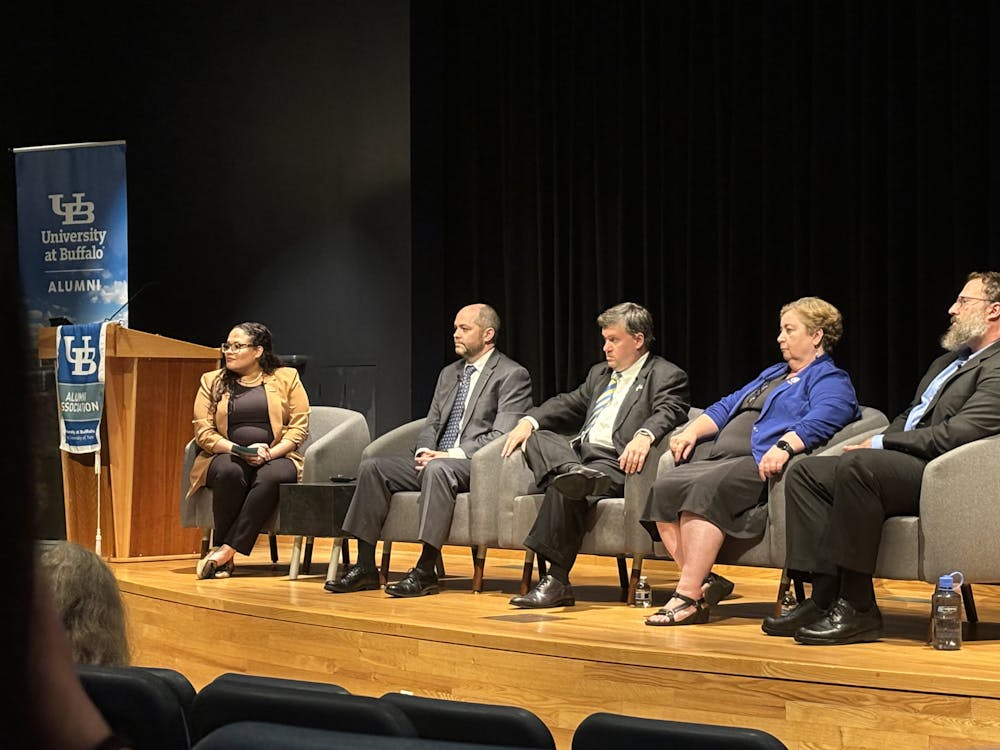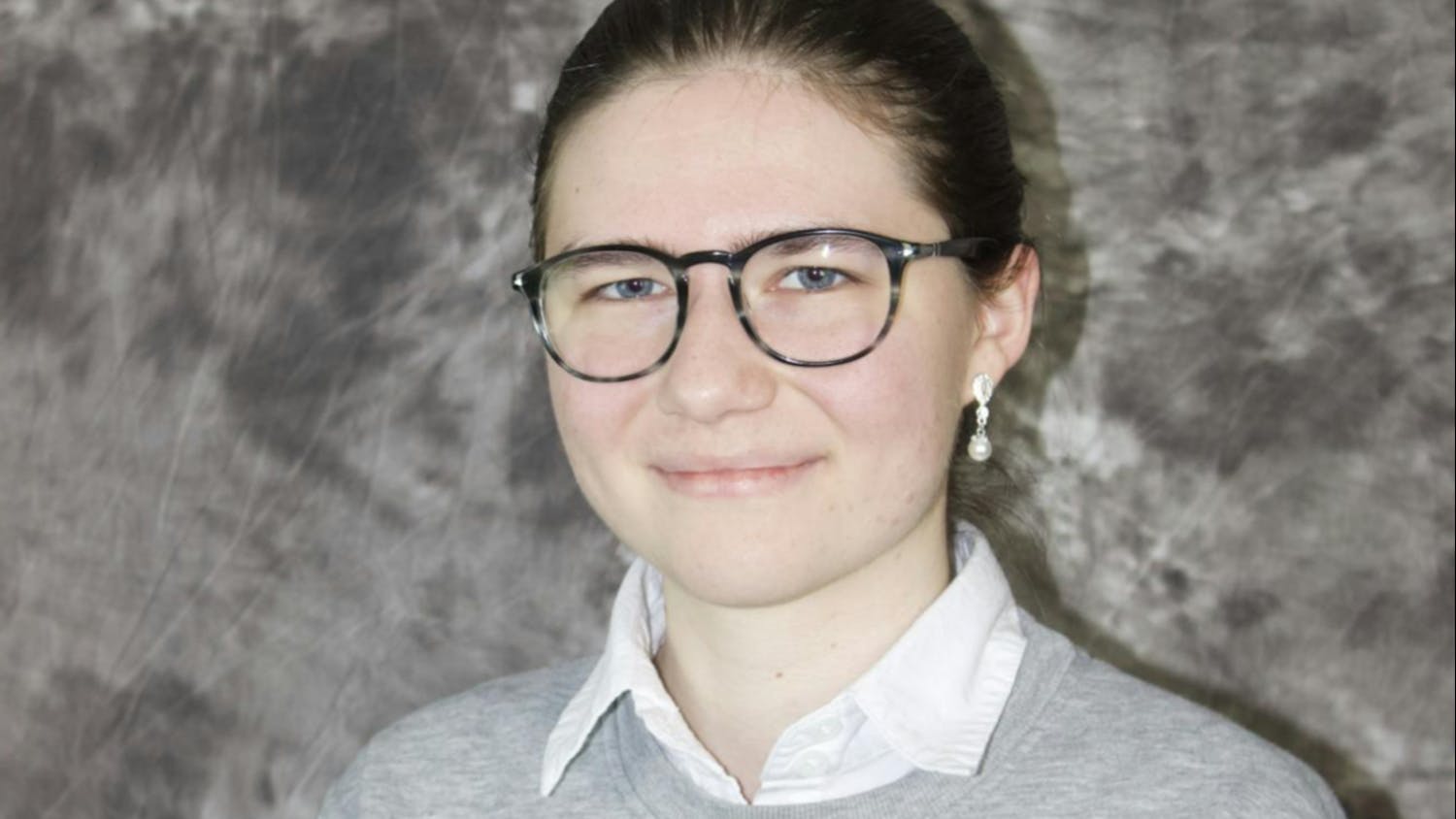Voting by mail, early voting, electronic machines and AI Robo calls are all impacting American elections. Keeping track of new election phenomena and understanding them are confusing. This is why political scientists and election scholars Connor Dowling, Shawn Donahue, Christy McCormick and Jacob Neiheisel came together in UB’s Center for the Arts to discuss safeguarding democracy in America.
Except for the few late birthday outliers, almost every UB student who is an American citizen is eligible to vote in the upcoming 2024 election. It’s encouraged that these students become part of the 90% of the eligible American voters registered to vote.
While this number is high, only about half of the 90 percent actually vote in elections.
“It’s been trending upwards in recent years, but certainly we are something of an outlier on the global stage when it comes to the percentage of our citizens [who] actually turn out [to] vote,” McCormick said.
This is why election education is so important. So what does voting actually look like?
The United States is not part of the 22 countries that have compulsory voting, and most likely will not be in the near future.
“I don’t know [if] we’ll ever get there because of our First Amendment,” McCormick said. “It’s not a part of anybody’s national platform at this time… We’re not polarized on everything, but that’s certainly one thing I think the parties certainly agree on.”
With compulsory voting out of the question for now, eligible voters must register to vote online, at the DMV, or by printing a form and mailing it in. Voters then have the option of voting by mail or voting early. With this ease comes security concerns.
“It’s a big change from voting in person,” McCormick said. “We want to make sure we have one person one vote.”
One person one vote ensures each person’s voting power is roughly the same. With voting by mail there are many concerns, including the post office.
“I’m more concerned about the post office when it comes to vote by mail,” McCormick said. “There’s about a 1% failure. When people vote by mail, in the last election that’s 690,000 people which is outside the margin of victory.”
McCormick’s proposed solution is to mail the ballot early, put it in a drop box or take it into the voting office/polling place.
One issue with voting early, however, is that many things can change up to the day before an election. The question of whether it is increasing turnout or cannibalizing election votes is up for debate, according to McCormick.
Voting in person requirements, as with most voting requirements, vary from state to state. In New York, a voter verifies identity on the voter registration form. Voter verification, as in many states, is not needed to be shown through an identification card.
While the question of requiring identification is a highly debated topic in the United States, the root of the problem is also a question.
The cost of getting an ID was ruled by the Supreme Court as not qualifying for a poll tax. Dowling argues that the lack of ease in obtaining an ID may disenfranchise voters.
“There’s inequity in that burden,” Dowling said. “I had a student from Germany, and this conversation came up and he just kind of looked around and said, doesn’t your government just give you an ID with a picture when you turn 18?”
This is not the case in America, and the ID non-requirement helps American citizens such as Native Americans born on reservations.
With the information about voting, there is also a mass amount of information about who to vote for. With the reliance on social media and AI to make decisions, voters are stuck in a whirlwind. McCormick suggests getting information from websites ending in .gov or from NSCL.org.
Times are always changing, and voting is no exception. Remaining informed is more challenging than ever and the panel sought to help clarify some challenges.
Sophia Stines is an assistant features editor and can be reached at sophia.stines@ubspectrum.com
Sophia Stines is an assistant features editor.





